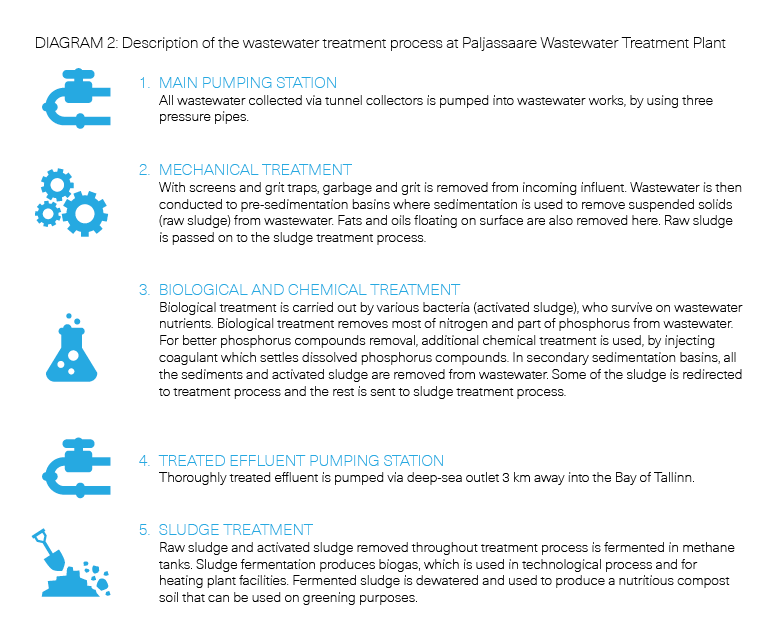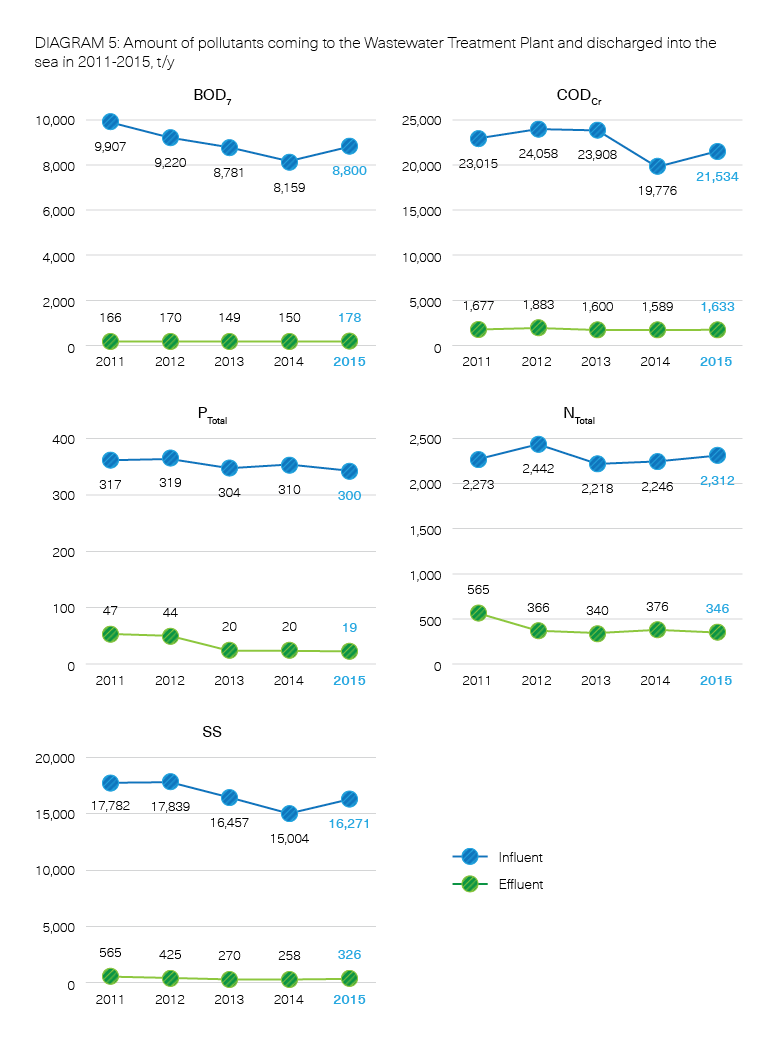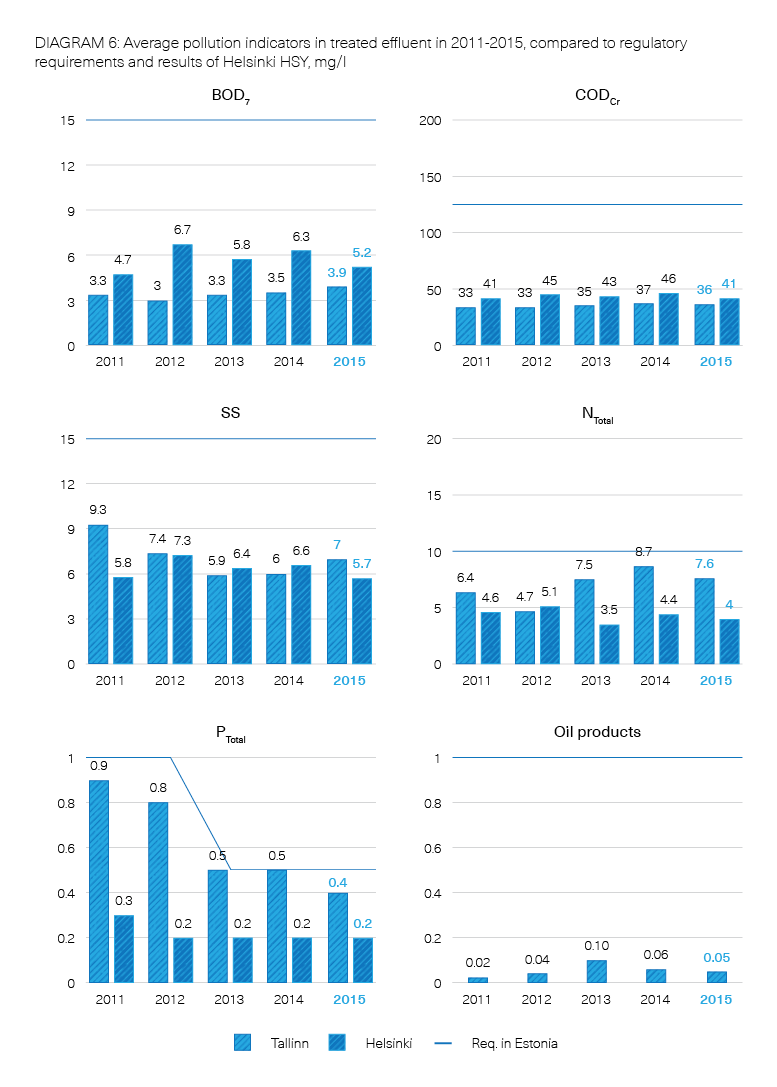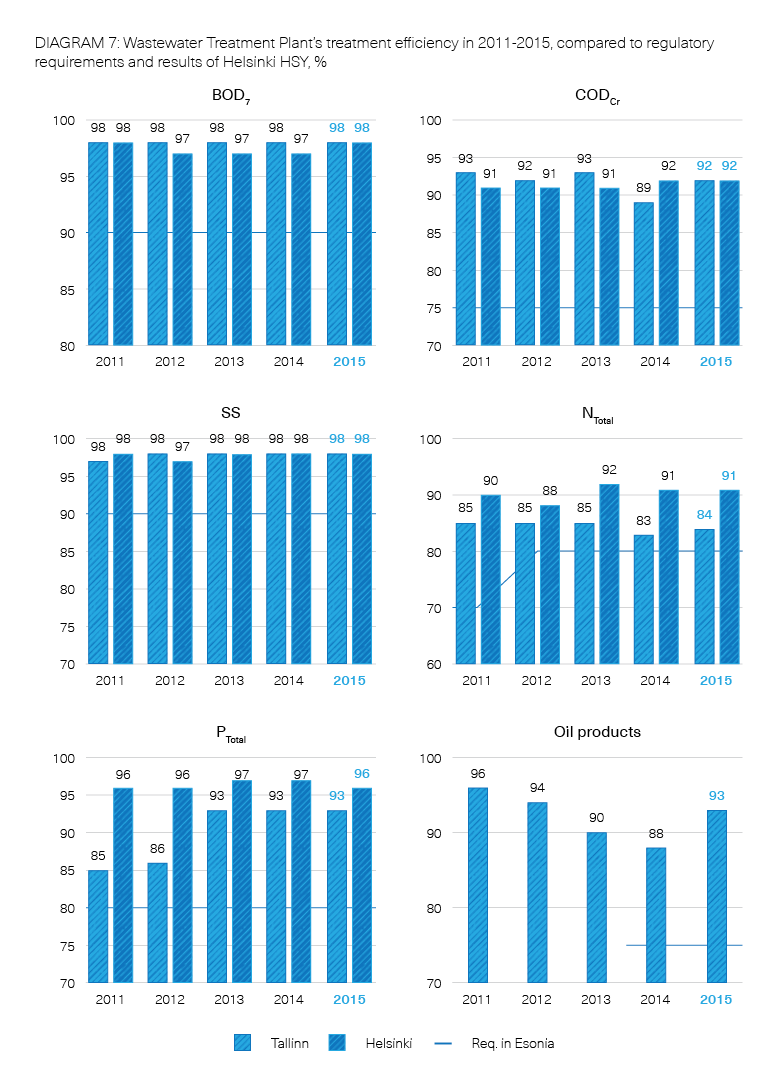Wastewater Treatment
We treat the wastewater collected in Tallinn and nearest surrounding areas, using environment-friendly and modern technologies at Paljassaare Wastewater Treatment Plant. We are committed to maintaining the high standards and achieving the results that would outperform all standards that established for the effluent discharged into the Baltic Sea.
45 million m3 of wastewater was treated at Paljassaare Wastewater Treatment Plant in 2015.
The quality of effluent discharged into the sea is set by the legal acts and the water extraction permit no L.VV/322982. The concentration of pollutants in wastewater arriving to the treatment plant and in the effluent leaving the plant are monitored in order to assess the efficiency of the treatment process and the quality of effluent. In 2015, the wastewater laboratory carried out 47,000 analyses at different wastewater treatment stages.
The important pollution parameters for us are the following:
- BOD7 (biological oxygen demand shows the amount of oxygen required for the defined biological decomposition of organic matter in the course of 7 days);
- CODCr (chemical oxygen demand is a measure of the decomposition of organic matter, measured as the consumption of oxygen in chemical oxidation of all organic matter in water);
- SS (suspended solids shows the volume of solid matter in water which is caught in a filter with a defined mesh size);
- Ntotal and Ptotal (total phosphorus and total nitrogen are elements contained in nutrient salts, which increase the growth of plankton in water. If the content of nutrient salts is too high, the growth can be so strong that oxygen is used up, causing a shortage of oxygen);
- Oil products (show the amount of light (e.g. petroleum) and heavy (e.g. heavy fuel oil) oil products).
Wastewater volumes and the pollution loads in 2015 were slightly higher, but the level of pollutants discharged with effluent were compliant with all the requirements and similar to previous years.
Wastewater outlets to the sea
During 2015, we were bound to open the emergency outlets in the Wastewater Treatment Plant five times for a short period of time during heavy showers, in order to avoid any major damages. Total of 45,443 m3 of wastewater diluted by storm water (dilution ¼) was conducted to the sea.
Due to the shock loads which exceeded the biological treatment capacity, 317,432 m3 of highly diluted wastewater that had undergone mechanical treatment was discharged into the sea through the deep-sea outlet.
Pollution charges
As a water company we are required to act in line with the environmental permits and pay pollution charge with the aim to avoid and reduce the potential damage caused by pollutants or waste discharged to the environment.
The calculation of pollution charge is established in the permit for a special use of water and the Environmental Charges Act, and is applied to the pollutants contained in the effluent and storm water at the particular outlets. Both the receiving water coefficient of the specific outlet, as well as compliance with the pollutant limit value in effluent are taken into account in pollution charge calculations. In 2015, the pollution charge paid for discharging pollutants into receiving waters formed 4.2% of the cost of services sold.





